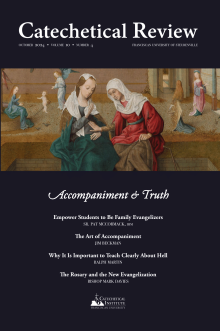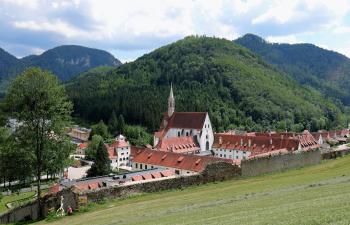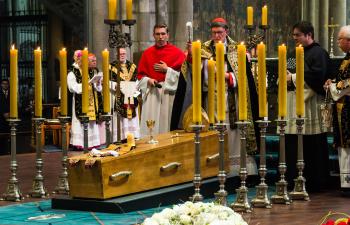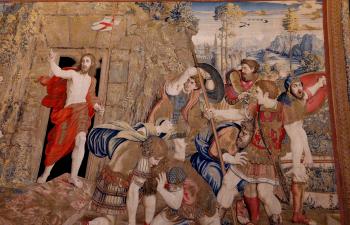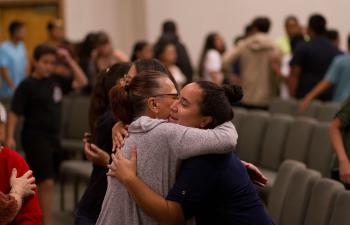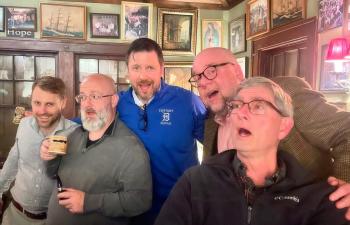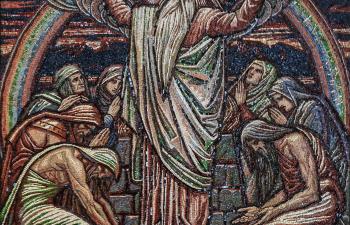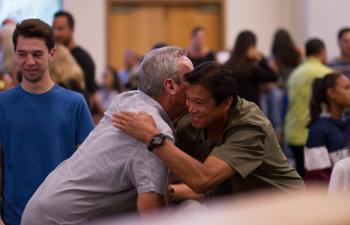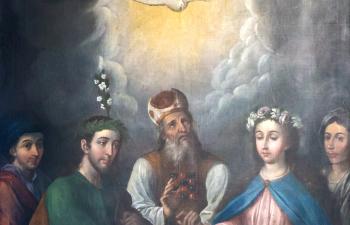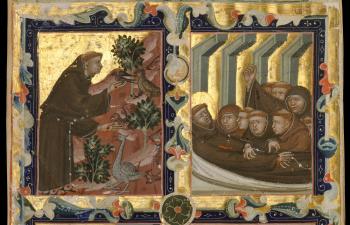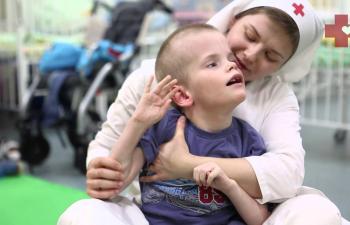 The joy and youthfulness of the Catholic priesthood never fade. The passing years only increase a sense of wonder at the grace and power of the priesthood, not least in the daily offering of the Mass and in a life dedicated to the service of countless souls in the light of the Eucharist. A priest needs look no further for the source of his life and joy. On the 40th anniversary of my ordination, I traveled as a pilgrim to Lourdes on February 11th which celebrates a moment when “the Mother of Christ made her presence felt and her voice heard.”[1]
The joy and youthfulness of the Catholic priesthood never fade. The passing years only increase a sense of wonder at the grace and power of the priesthood, not least in the daily offering of the Mass and in a life dedicated to the service of countless souls in the light of the Eucharist. A priest needs look no further for the source of his life and joy. On the 40th anniversary of my ordination, I traveled as a pilgrim to Lourdes on February 11th which celebrates a moment when “the Mother of Christ made her presence felt and her voice heard.”[1]
I came to Lourdes to give thanks to God for Our Lady’s accompaniment throughout my priestly life. The pilgrimage led me to recognize anew the place of her Rosary in this life and mission. I saw how the Rosary formed an unbroken chain through every scene of my life, linking every moment with Gospel contemplation, intercession, reparation, praise, and thanksgiving to the Holy Trinity. As Pope St. John Paul II once reflected, “The Rosary has accompanied me in moments of joy and moments of difficulty. To it I have entrusted any number of concerns; in it I have always found comfort” (RVM, no. 2).
At the grotto, I was struck by the memory of the eloquent silence with which Our Lady came to stand with St. Bernadette in her poverty. The essence of the message of Lourdes is found in the very graciousness with which heaven looked on Bernadette. In those blessed moments, Mary Immaculate wished to open to every pilgrim the riches God offers us in prayer; the need to intercede for souls destitute in sin; the grace of healing and conversion, flowing like the spring of water for all humanity; and the need to make a place at the heart of our lives for the supreme gift of the Holy Eucharist. Such was the spoken message of Lourdes; yet, the apparitions consisted largely in the unbroken silence of prayer, during which Our Lady held a rosary. In this we see a silent invitation to share the prayer of her Immaculate Heart, prayer which St. Luke describes as the way she “treasured all these things, pondering them in her heart” (Lk 2:19). According to the Gospel imperative, the Rosary requires that you and I change and become as a little child, contemplating Christ in his Incarnation and redemption. In this way, “Mary constantly sets before the faithful the ‘mysteries’ of her Son, with the desire that contemplation of these mysteries will release all their saving power” (RVM, no. 11).
In the New Evangelization, John Paul II held up the Rosary as offering “the depth of the Gospel message in its entirety” and a prayer “destined to bring forth a harvest of holiness” (RVM, no. 1). Yet, if we ask who first gave us the Rosary, an awesome realization dawns that it was the Mother of God who placed the Rosary into our hands and who now leads us through the joy, light, sorrow, and glory of the mysteries to be “In living communion with Jesus through—we might say—the heart of his Mother” (RVM, no. 2). This is the gift we have received in the Rosary “which gradually took form in the second millennium under the guidance of the Spirit of God” (RVM, no. 1).
At the dawn of this new millennium, John Paul II invited us to rediscover the Rosary with urgent words: “May this appeal of mine not go unheard!” (RVM, no. 43). In continuity with the constant encouragement of the Magisterium and the witness of the saints, he reminded us that, in the work of evangelization and catechesis, the Rosary offers a path of powerful proclamation and a means by which we can personally assimilate the mysteries of Christ. If we help others discover—or rediscover—the Rosary, we will have done no small thing in opening hearts to the Gospel message and setting them on a path of lifelong contemplation that is “nothing other than to contemplate with Mary the face of Christ” (RVM, no. 3). My pilgrimage to Lourdes reminded me that, in our poverty and need, we are invited by the Rosary to discover the “unsearchable riches of Christ” (Eph 3:8) with Mary’s gaze and with Mary’s wonder (see RVM, no. 10).
The Most Reverend Mark Davies is the Bishop of Shrewsbury, in England.
Notes
[1] Pope John Paul II, Rosarium Virginis Mariae, no.7, cited in text as RVM.
This article originally appeared on pages 60-62 of the print edition.
Art Credit: Our Lady of Lourdes appears to St. Bernadette, by Fr. Lawrence Lew, OP, Flickr.com CC.
[1] Pope John Paul II, Rosarium Virginis Mariae, no.7, cited in text as RVM.
This article originally appeared on pages 60-62 of the print edition.
Art Credit: Our Lady of Lourdes appears to St. Bernadette, by Fr. Lawrence Lew, OP, Flickr.com CC.
This article is from The Catechetical Review (Online Edition ISSN 2379-6324) and may be copied for catechetical purposes only. It may not be reprinted in another published work without the permission of The Catechetical Review by contacting [email protected]


